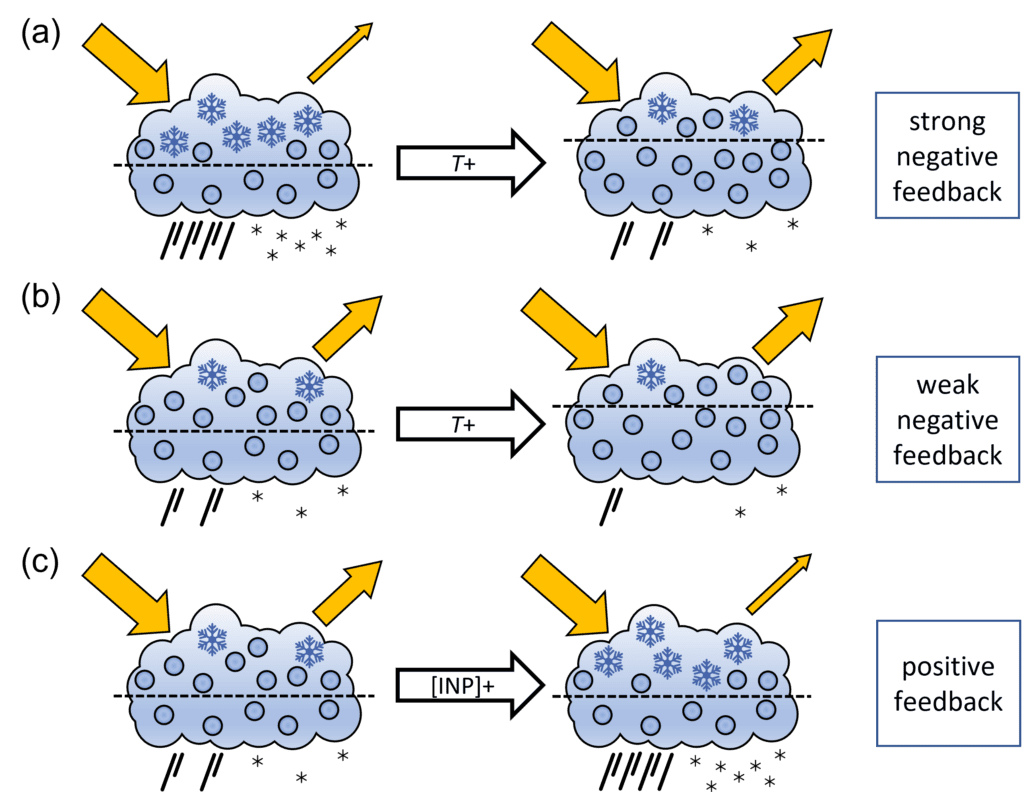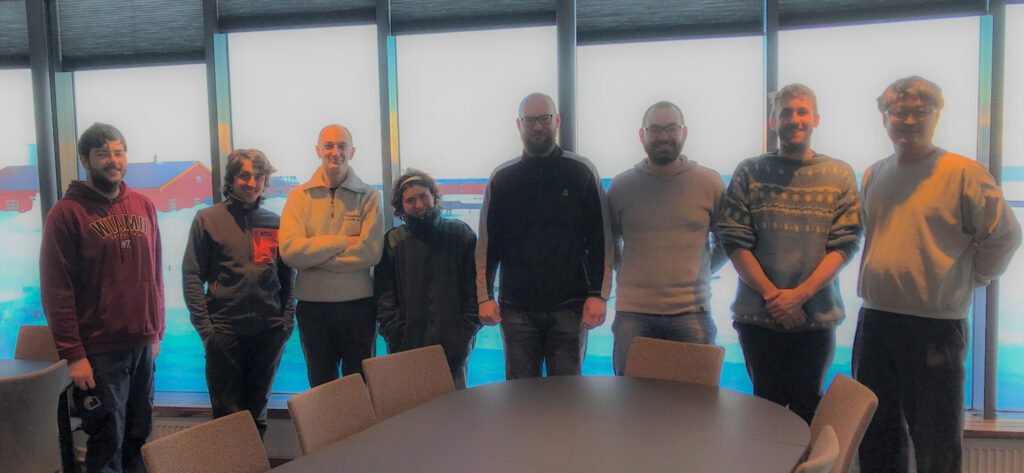The PINE instrument is strapped to the cable car on the way up to the Zeppelin Observatory.Photo: Trine Lise Sviggum Helgerud
Cloud production in Ny-Ålesund
🖊️ Ingrid Kjerstad/Norwegian Polar Institute
📷 AWI, NPI
🔗 The Atmosphere Flagship
The Zeppelin observatory has now got a new instrument! An international team of researchers are setting up a Portable Ice Nucleation Experiment system called the PINE-instrument on the Zeppelin mountain, 472 meter above sea level.
More precise models
Particles called ice-nucleating particles (INPs) are important in the different phases a cloud goes through. The different phases affect the clouds radiative properties as well as its precipitation (Figure 1). Climate predictability in the future can be improved by understanding the microphysical processes behind INPs. With climate change and more extreme weather this is an important knowledge gap to bridge to get more precise weather models and forecasts.

Clouds in a chamber
The PINE instrument will produce clouds inside a chamber to investigate the ice nucleating ability of aerosols in the Arctic. This makes the researchers able to study the extent of the INPs influence on the cloud droplets. The INPs are quite rare (sometimes only one in a million), which challenges measurement techniques. With the use of the PINE instrument the researchers can control and count ice crystals under different conditions that gives input to how clouds form and behave in terms of precipitation and radiation. As the instrument is operated remotely earlier techniques with filtering samples is replaced with an instrument that can measure with a higher temporal resolution albeit a decreased signal threshold.
International team
The research group behind the studies on INPs come from the US, Germany, and Italy. Hosted by the French-German research station AWIPEV and in collaboration with the Italian station Dirigibile Italia, the researchers conduct an extensive field campaign in the period from mid-March to mid-April 2023 to study in detail the seasonal changes in the Arctic atmosphere throughout the winter-summer transition period.

Future perspectives
The PINE will be deployed for a full year to study seasonal changes in INP concentration in the high Arctic. Additionally, in spring 2024 the vertical resolution of measurements will be investigated by measuring INPs on-board of a self-build unmanned aerial vehicle.
Did you find what you were looking for?